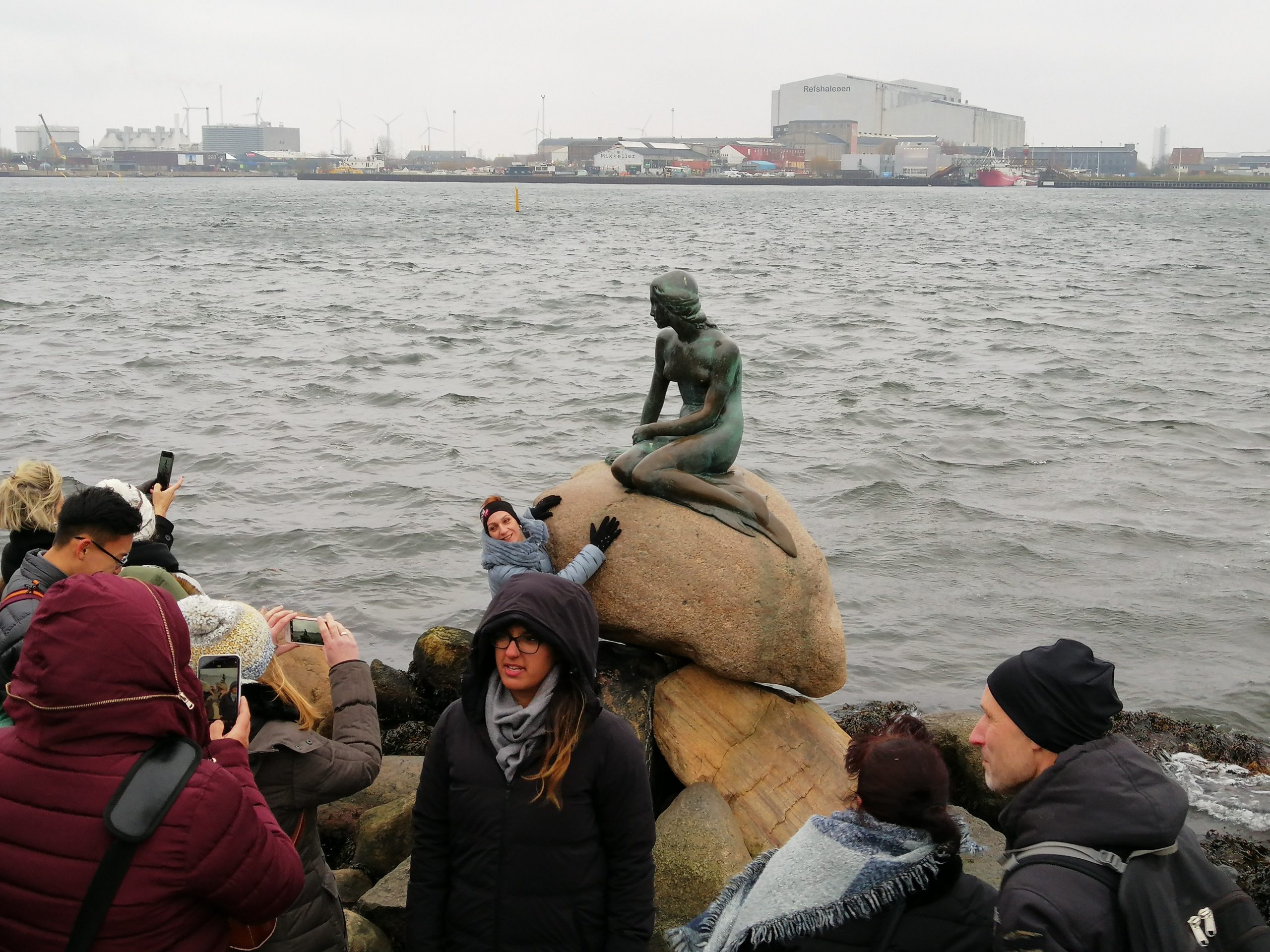Separating roots in crop mixtures: my young researcher mission to Copenhagen

There are many reasons to visit Copenhagen, amongst them the sculpture of The Little Mermaid and the beautiful red brick buildings. However, none of these were my reasons… I was on a mission to separate roots of mixed crop species, i.e. two or more crops grown in the same area at the same time.
I spent three weeks of November 2019 at the Department of Plant and Environmental Sciences, University of Copenhagen (UCPH) as part of a DIVERSify Young Researcher Mission. This is an initiative of the project offering early career researchers opportunity to learn from and network with partner researchers and other organisations. I purposefully went with the aim of: i) acquiring techniques to distinguish and separate roots of different crop species growing in a mixture; ii) learning laboratory analysis techniques for key indicators of resource use in mixtures, and; iii) networking with both young and experienced researchers at UCPH!
Why separate roots in crop mixtures?
Many positive attributes are associated with crop mixtures, for instance, species complementarity often results in higher yield due to more efficient resource use. However, the higher yields in mixtures are mostly assessed on above ground plant parts (shoot biomass or grains) only, and roots are often neglected. This is partly because quantifying interaction and the contribution of each species to the total root production is challenging. We wanted to disentangle a combined mixture effect and individual species effect on root production through separation of roots per species. This could provide a clearer explanation for species-specific contributions to the mixture performance.
Tools and methodological approach
We used a method new to me, yet novel in its mode of operation; the Fourier transform infrared (FTIR)-Photoacoustic Spectroscopy (PAS) method. The FTIR-PAS is a powerful spectroscopy tool that is utilised for the purpose of discriminating and identification of different biological samples. In simple terms, the FTIR-PAS generates a spectrum for each analyzed sample based on thermal expansion and sound waves that an attached microphone detects.
We used root samples of pea and oat from a mesocosom experiment grown in pure culture and in mixture as our model system. Before analysis with the FTIR-PAS, we prepared root samples that were originally frozen into fine powder. Sample preparation involved washing the roots under running water, separating debris from roots and oven drying the samples at 55°C for 48 h. We then weighed the root samples and grinded them into fine powder using zirconium oxide milling balls. At this stage, the grinded samples were ready for analysis.
To generate and visualize absorption spectral data, we placed samples in metal ring cups (10 mm in diameter) and inserted into gas (helium)-filled chamber in the FTIR-PAS where samples were exposed to infrared radiation. The resulting data comprising absorption intensities of each sample at different wavelengths of the spectra was obtained for further processing.
1) Roots of pea-oat species mixture are washed to separate debris from roots:

2) Prepared root sample is placed in metal ring cups ready for analysis with the FTRI-PAS:

3) The Fourier Transform Infrared (FTIR) is mounted with a Photoacoustic Spectroscopy (PAS) detector for use in sample analysis:

4) A computer monitor displays spectra of different samples generated by the FTIR-PAS. Each line of the spectra represents one sample:

Lessons learnt
The three weeks of the mission can best be described as a period of tremendous learning, networking and collaboration. I have learnt new analytical methods for processing both samples and chemometric data that could potentially provide solutions to currently unexplored knowledge gaps in below ground plant-interaction in species mixtures. Although the period could only allow us to generate preliminary results, the long-term prospects of the study are very promising. Stay tuned!
Thanks to Lars Pødenphant Kiær, Anja Schmutz, Jing Huang and Martin Weih for the experience, and DIVERSify for funding this visit.
P.S. In the end, I still had a chance to visit the “Little Mermaid” sculpture and many other attractive places in Copenhagen.
| AUTHOR: James Ajal |